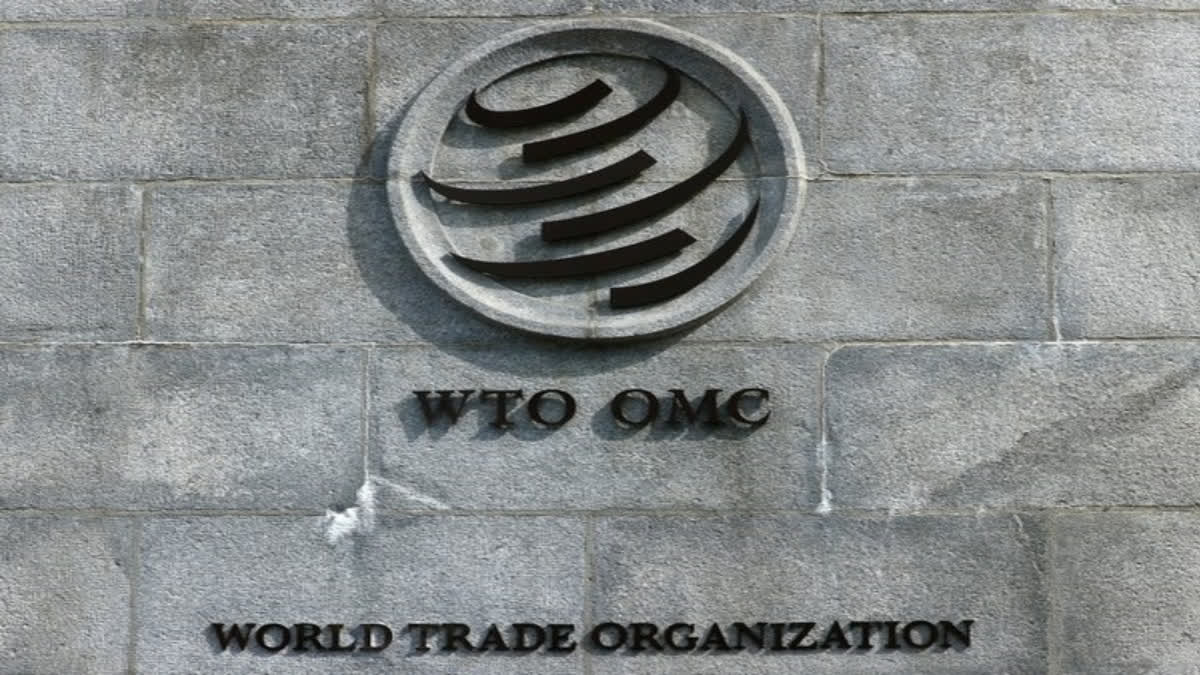New Delhi: Building coalitions with other WTO members will help India push for the adoption of open and interoperable payment systems like UPI with a view to cut the cost of money transfers or remittances, a report by think tank GTRI said on Monday.
The dominance of a few large players in the market contributes to these high costs, through complex and opaque fee structures, the GTRI said. It added that India's recommendations to tackle this include encouraging digital transfers, fostering interoperable systems, promoting competition, streamlining regulations, and enhancing pricing transparency.
In the ongoing WTO's 13th Ministerial Conference (MC13) in Abu Dhabi, UAE and India will make a strong push for the adoption of open and interoperable payment systems, among WTO (World Trade Organisation) members.
The Global Trade Research Initiative (GTRI) said that this proposal is driven by India's belief that such systems can streamline global digital payments, and cut costs by fostering innovation and competition in the remittance market.
This will not only benefit individual families but also contribute to broader economic development and poverty reduction efforts, it said. It added that the challenge of high remittance costs, averaging 6.18 per cent globally 'well above the United Nation's target of 3 per cent ' is a key issue India aims to address.
"When UPI is adopted at a large scale costs may go down to 2 per cent level. With Global remittances at USD 860 billion in 2023, widespread adoption of UPI may result in savings of USD 35 billion annually. India's push for UPI at the MC13 also showcases its leadership in digital payment technologies," GTRI Founder Ajay Srivastava said.
MC is the highest decision-making body of the 164-member Geneva-based WTO (two more countries - Comoros and Timor-Leste will become members from today). Trade ministers of these countries are gathering in Abu Dhabi to discuss a wide range of issues such as agriculture and fisheries subsidies.
Srivastava said that while the WTO does not have specific rules governing remittances, India may seek to leverage existing agreements such as the General Agreement on Trade in Services (GATS), the Agreement on Technical Barriers to Trade (TBT), and the Agreement on Trade Facilitation (TFA) to advocate for policy changes that facilitate cheaper and more efficient remittance services.
"Support for India's proposals may come from countries with significant migrant populations who recognise the benefits of affordable remittances," he said, adding however, opposition could arise from developed nations with major financial institutions, countries prioritising financial security, and those with dominant domestic remittance services.
According to the World Bank, the report said, India is the largest recipient of remittances in 2023, with an estimated USD 125 billion. Other top recipient countries in 2023 are Mexico (USD 67 billion), China (USD 50 billion), Philippines (USD 40 billion) and Egypt (USD 24 billion).
Citing 2022 data, it said that the shares of source countries in sending remittances to India are US - 17.79 per cent, United Arab Emirates - 15.67 per cent, Saudi Arabia - 10.60 per cent, Kuwait - 4.87 per cent, and Singapore - 4.18 per cent. "By engaging in constructive dialogue and seeking common ground, India can increase its chances of achieving positive outcomes at the WTO MC13 and beyond in its efforts to make remittances cheaper and more accessible for migrant workers and their families," the report said.
It added that India's success in garnering support will depend on its ability to build coalitions with other countries and stakeholders who share its goals and can advocate for collective action; and clearly articulate the benefits of cheaper remittances for all stakeholders, including receiving countries, migrant workers, and even remittance service providers through increased market volume.
India may also look to address potential concerns about financial security and regulatory frameworks by proposing solutions that balance efficiency with necessary safeguards. Measures such as the promotion of digital transfers; encouraging interoperable systems; fostering competition, streamlining regulations, and increasing transparency can help make remittances cheaper.
"Shifting from cash-based remittances to digital transfers can significantly lower costs. Digital platforms offer faster, cheaper, and more transparent transactions; linking national digital payment systems across borders can eliminate the need for foreign exchange conversions, reducing costs and transaction times. India's UPI system serves as a successful example," Srivastava said.
It also said that implementing policies that encourage competition in the remittance market can drive down prices and improve service quality, and regulatory frameworks should be streamlined to balance financial security concerns with facilitating efficient and affordable remittance flows. "Ensuring clear and transparent pricing structures allow senders to make informed decisions and choose the most cost-effective options," the report said.
Read More



